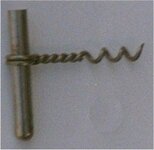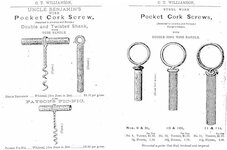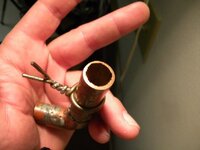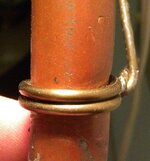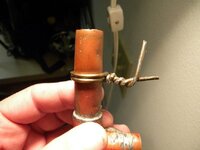Don in SJ
Silver Member
- May 20, 2005
- 4,932
- 837
- Detector(s) used
- MINELAB SE Pro
- Primary Interest:
- All Treasure Hunting
Over the years I have found a few of these, mostly at homestead from the 1800's era. It looks like all the ones I found are the same, 2 inches in length, with wire wrapped around the center of it.7 Found this one this morning near the hem weight. Usually at homesteads, but this one was associated with an early 1800's Iron Forge and Sawmill, occupied till about Civil War period.
Don
Don


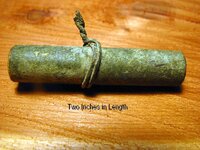
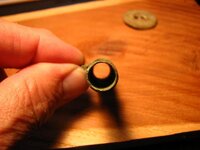
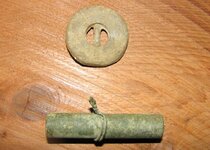


 Since I am not 100% sure where all were found but 100% certain one was found in association with a homestead that housed the owner of a well known Iron forge from approx 1815-1830. But, the site was occupied prior to that, since it was a Saw mill site from the 1700s. After the iron forge closed down, I think the area slowly went from a tiny community (a few worker houses, Tavern, plus the mansion the owner lived in) to a total ghost town mid 1800s.
Since I am not 100% sure where all were found but 100% certain one was found in association with a homestead that housed the owner of a well known Iron forge from approx 1815-1830. But, the site was occupied prior to that, since it was a Saw mill site from the 1700s. After the iron forge closed down, I think the area slowly went from a tiny community (a few worker houses, Tavern, plus the mansion the owner lived in) to a total ghost town mid 1800s.
